Spoiler Alert – everything you read, see, or hear isn’t always true. I’m not talking about fake news. Writers of all ilk take liberties to tell a richer story. I have mentioned this regarding bloggers in other posts (see Cinque Terra Part Uno and Part Due). Sometimes, when we are comfortable in our bubble, we want to continue to believe. But when you step out into another adventure in your Later Gap Travels, you come across things that make you change your perspective. I’m not talking about things like “The world is flat” or “The universe revolves around the earth” (or around anyone on it for that matter). But we learn stuff about some of those things most of us have taken for granted (or never really thought about). Such is the case for a few interesting tidbits we picked up on a recent trip to Verona.
Arriving to Verona

First, visiting Verona is well worth the trip, especially if you find yourself around Florence or Milan with a day or two of spare time on your hands. On our Later Gap adventure, living right outside Pisa, Verona was always on our “must do” list and on a recent weekend we undertook our usual research (YouTube and Blogs) and mapped out a gameplan. Although we love the train (which I will write about soon – another spoiler, it isn’t always smooth), we decided to drive as Verona is within two hours along the autostrada, and a train would take quite a bit longer. Armed with our initial plan and (incomplete) knowledge of what Verona offered, we set off.

Driving into Verona is interesting. We had booked a room right downtown, near the amphitheater. Verona is one of the better preserved Roman towns. That means there is a lot to see and do, but it also means the streets were laid out and constructed well before cars. We worked our way through the maze of one way streets and around some tight corners to get to our lodgings. I dropped my wife off as we passed the hotel the first time to find out where I was supposed to go to park, then I embarked on a penalty lap. When I made it back, she told me to just stop the car in the middle of the street (it wasn’t very wide), and get out, someone would come out and take the car and park it in the hotel’s garage. But we were told to make sure we had everything because it wasn’t going to be one of those in-and-out parking lots.
Built Around the Amphitheater
After checking in, we started off to explore the city. We started at the amphitheater. The structure is the original, and it hosts various operas and concerts throughout the year. That weekend, Carmen, the opera, was being performed. We had previously bought tickets and were looking forward to the production later that evening. All around the outside were various stage sets – crews switch them in and out as they show several different productions at various times (not all in a row). The sets are HUGE; cranes are used to hoist them in and out – it is a rather impressive undertaking. It was later in the afternoon, so we decided to wander through some of the shopping streets and look for an appetizer and a glass of wine (we are in Italy). Plus, we had a tour of the city the next morning; we usually use Get Your Guide and look for a 2-3 hour small group tour to find out what bloggers and YouTubers missed.
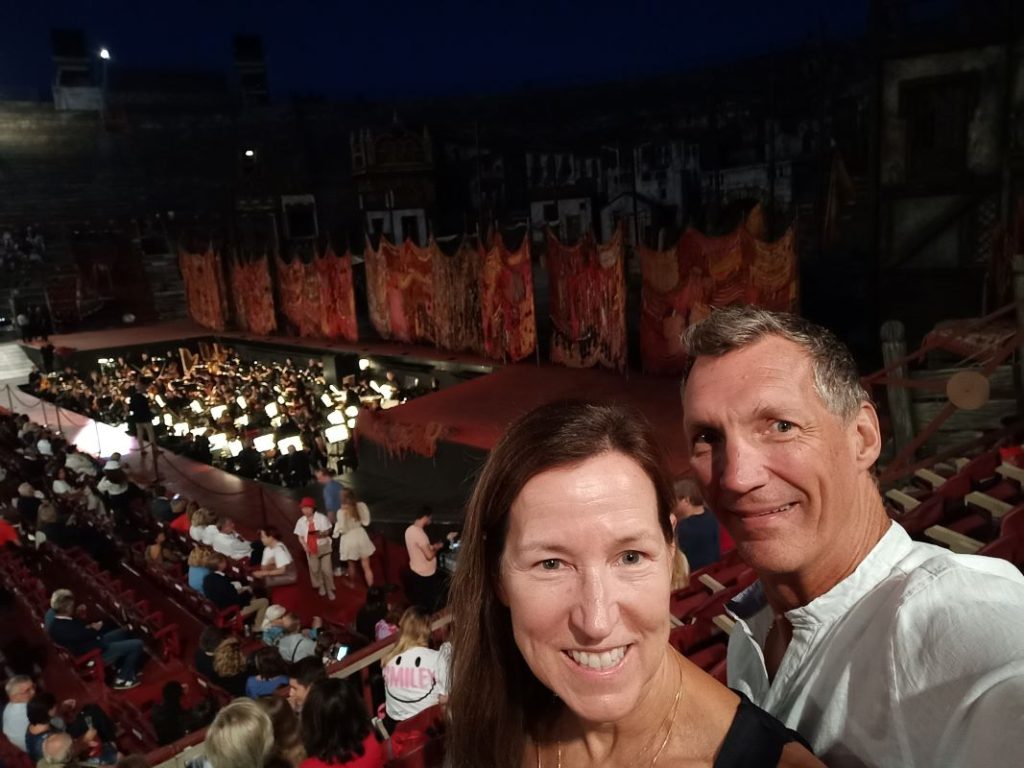
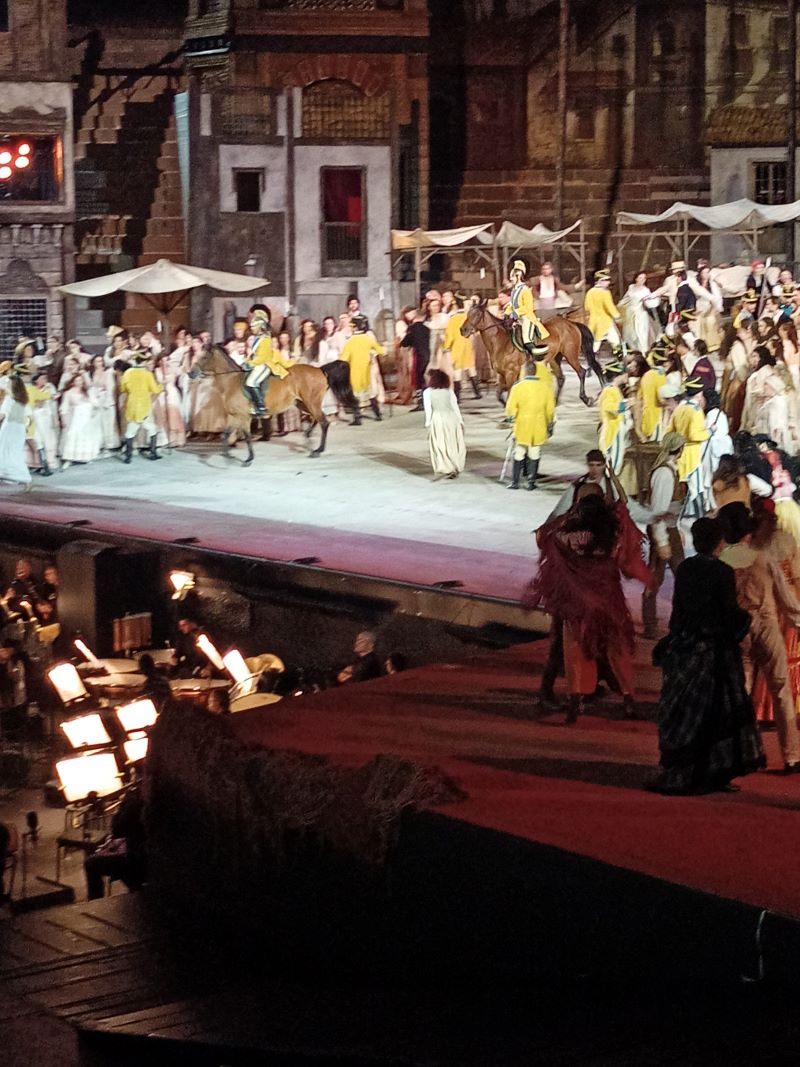
The opera that night was impressive. Our seats were along one of the sides, fairly near the stage. The show started after dark, at 8:30. The stage was set in one end of the amphitheater, and the floor of the arena and the seats flanking and facing the stage were filled. Sounds were natural – there was little to no amplification beyond the acoustics of the structure itself. The cast was large, with several hundred performers and live horses pulling carts across the stage. The seats were hard – they were the original stone seats that had been filled by Roman butts over 2,000 years ago. And the opera was long – reading the score discussed a three hour performance. But, when they broke for the second intermission, at midnight, we had to cry uncle. We hadn’t really eaten dinner and it was getting past our bedtime. We wandered out, sat down at a restaurant overlooking the theater, and ordered a pizza and glass of wine. Finishing up a little before 1, we wandered back to our hotel – and the third act was still in progress. Thus we discovered myth one – Carmen is longer than three hours.
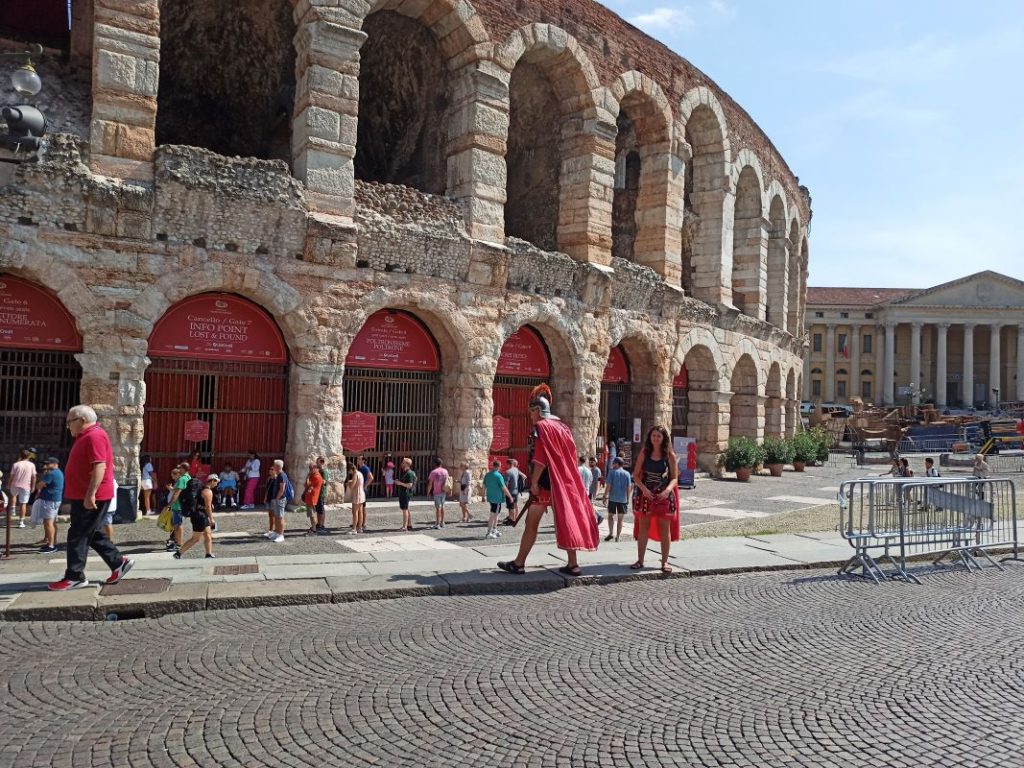
The tour met at 10 AM, near the amphitheater. Most of the city is built near, or radiates from, this area. We started out talking about the Roman history of Verona, including the structure of the city and arena. We noticed several individuals dressed as gladiators who would pose for pictures around. The guide pointed out a couple groups and asked what we saw wrong – knowing that gladiators weren’t really glamorous was easy. But women gladiators, which we saw posing all around, were a myth – no matter what some of the pictures and movies show.
In Charge – But Not In Town

Our first stop took us towards a large gate through the inner wall that surrounds the city. This wall marked the extent of the original Roman settlement. The wall and the buildings were topped in what we think of as standard tops of walls – the saw tooth pattern with a section that is higher, then a section that is lower and repeating all the way along. We knew from watching old movies and looking at pictures of castles in books that this was typical, and was for defense. WRONG – another myth our guide informed us. The design of the tops of the walls and buildings was to replicate the ruler’s crown – showing who had ultimate power in the city. This came from the times of when the Church and the political leaders were fighting for control – and the Roman emperor wanted to make sure everyone knew who really was in charge.
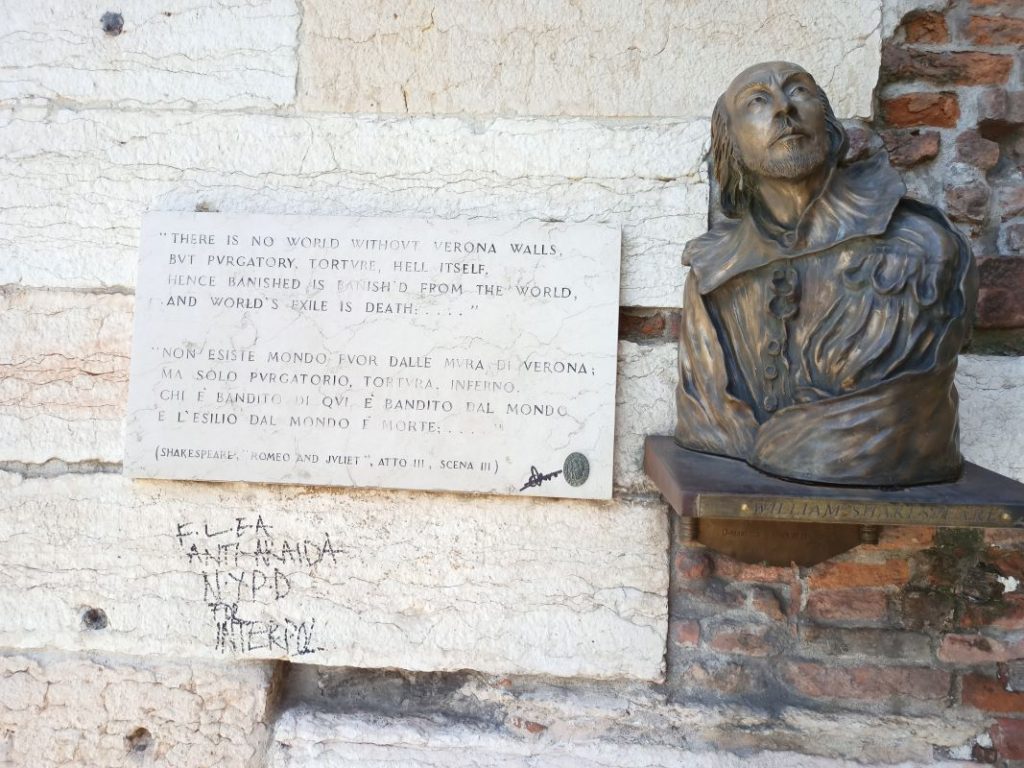
We then walked to the gate, where a plaque was imbedded. Shakespeare’s bust, with a plaque reading, “There is no world without Verona walls…,” honored the Bard from Avon and marked the gate through which Romeo had been banished from the city, and been forced to leave his young bride. There, we were relieved of another myth – Shakespeare had NEVER been to Verona, the city of the Montagues and Capulets, and the backdrop of two of his works. In fact, Shakespeare actually “borrowed” the idea for Romeo and Juliet from an Italian author, Matteo Bandello – copyright wasn’t such a big thing back then.
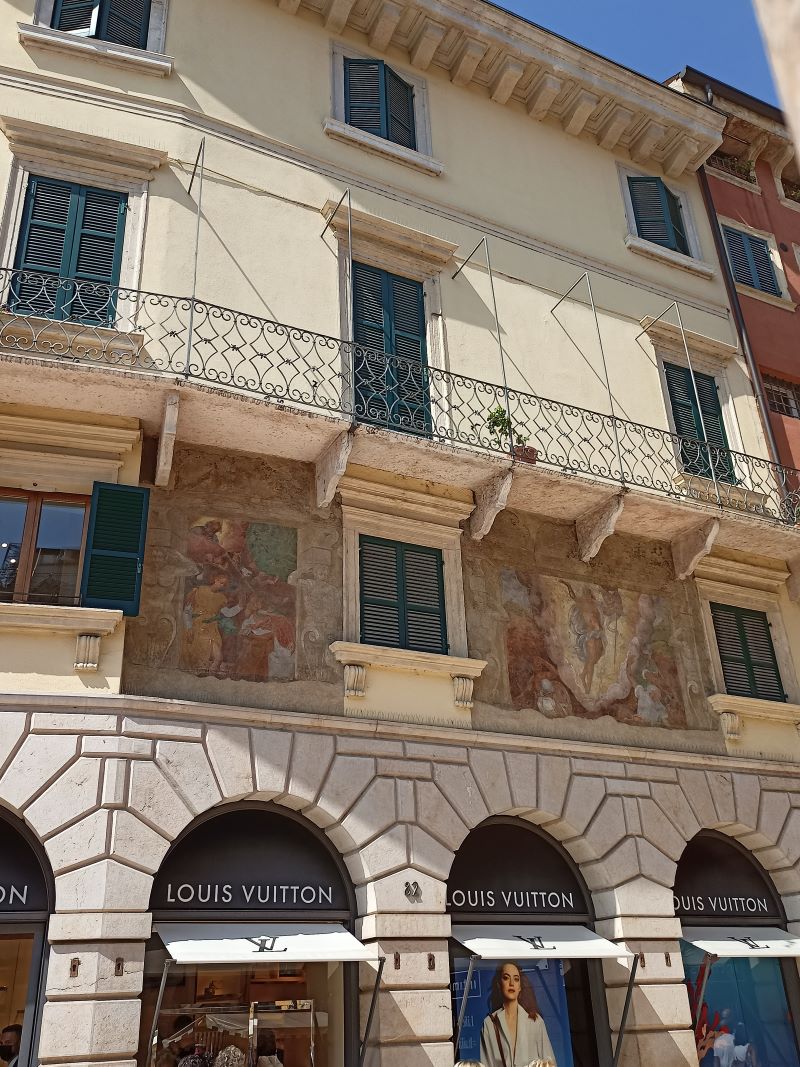
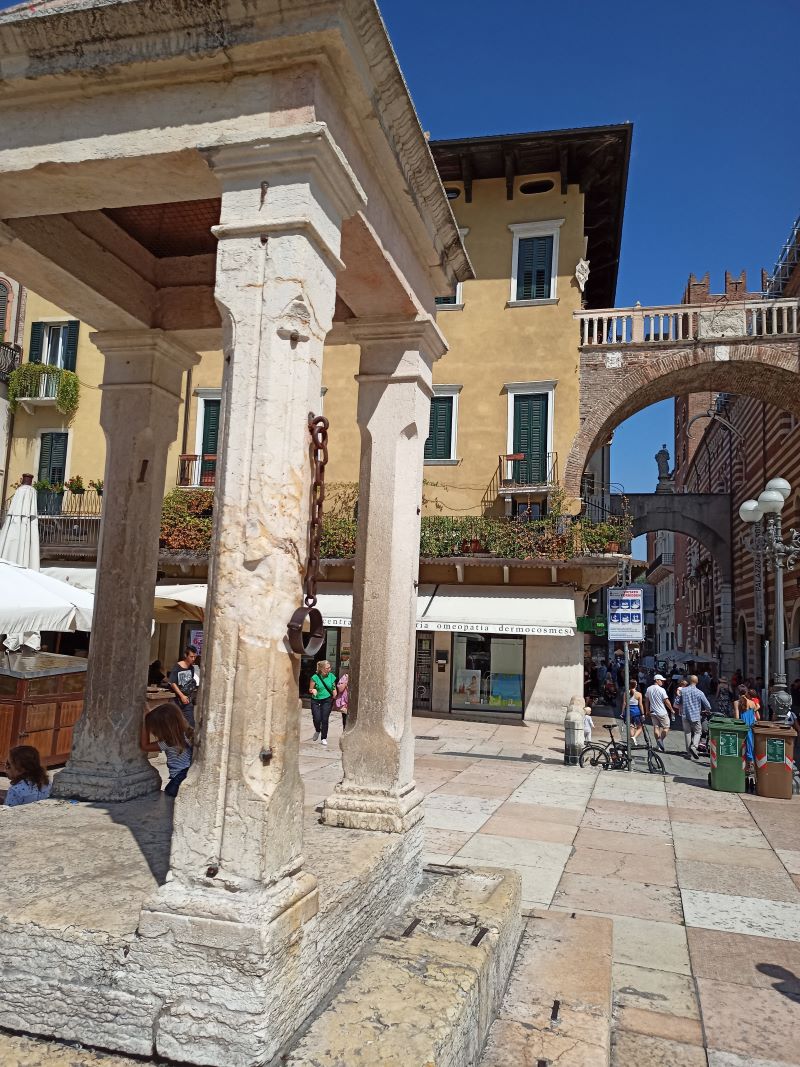
A little more informed, we wandered towards the middle of the city. Our route took us along the main Roman road, which is now nicely paved and lined with high end shopping, a dichotomy of Louis Vuitton stores topped with ancient frescos. The road goes straight from the main piazza around the amphitheater to the old piazza which hosts a daily market, lined with stalls selling all types of touristy goods. At the end of the market was a stand with a small portico. Iron rings were embedded into the pillars of the portico. We had seen these before in central squares and markets. We knew, in our hearts, these were places where they chained up the malcontents and criminals of the day, allowing the public to view them and maybe throw a tomato or two. However, another myth was about to be disavowed. These rings were actually not for punishment, and the portico wasn’t for shade. This was the weighing and measuring area of the old market – the rings, which we thought went around a neck, actually were a measure for firewood, and the various indentations, on the pillars and around the base, were the measures for length of different goods.
Wherefore Art Thou Romeo

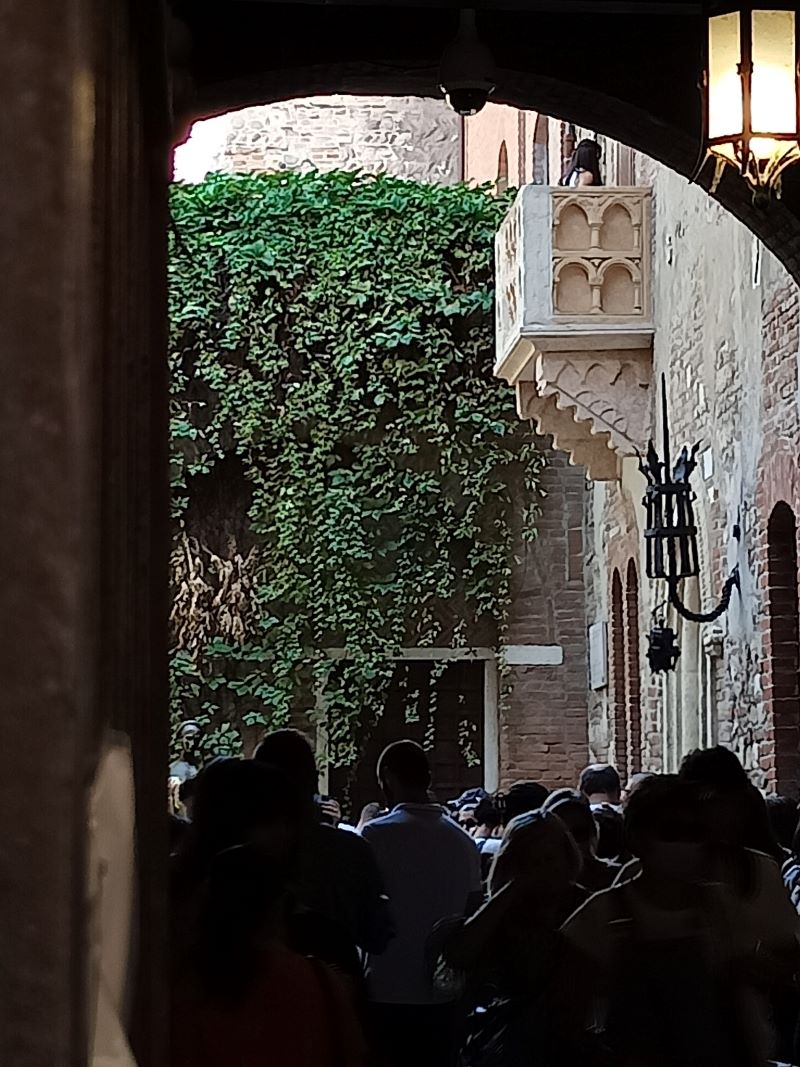
Passing the portico, we noticed a long line forming. Our guide pointed it out, then steered us into an alley. At this point, she proceeded to shatter everything we thought we knew about Romeo and Juliet. They never actually existed. Not only that, the Capulets never did either. The Montagues were a middling family from some other period in Veronan history. And the line – it was forming to see the balcony that Juliet supposedly stood on to pledge her undying love to her Romeo. Except, the balcony was built in the 1990s by the mayor of Verona to attract tourists. Although it looked “real”, the design and construction would never have stayed up nor lasted, especially with materials they had 500 years ago. The “greatest love story ever told” by the Bard of Avon about “the Little Rome” was a pack of embellishments.
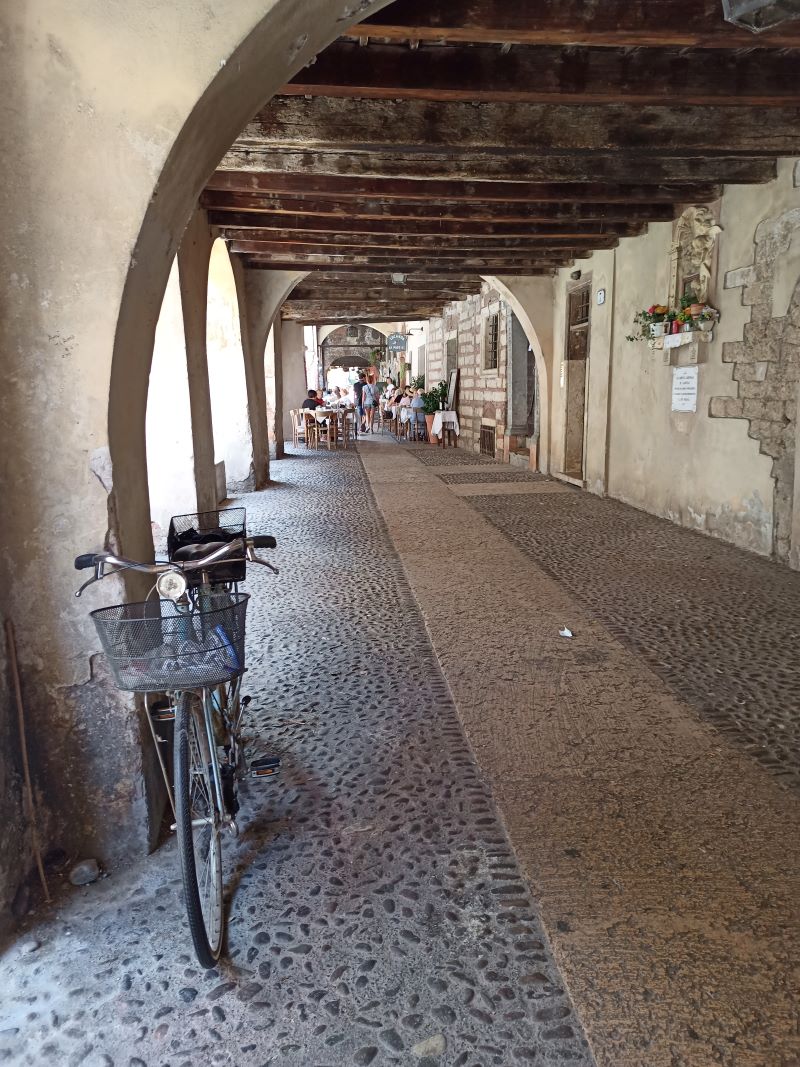
None of this is to say that Verona was not worth it. We loved the town, the history, the architecture, the shopping, the eating, the buzz, and our whole time in the city. Although the opera was longer than expected, it was spectacular. Although the walls weren’t styled for protection, they were impressive. Although Shakespeare never visited the city, his depiction of life at the time was accurate. Although Romeo and Juliet never lived, their “narrative” is the basis for countless other love stories over the past 500 years. And although much of what we thought we knew turned out to be a bit off, we still truly enjoyed our trip – so much so, that we went back, more than once. That is another thing that is special about being on a later Gap adventure – you think you know a lot of stuff, only to be confronted with the truths as you explore and experience real life in these real places.
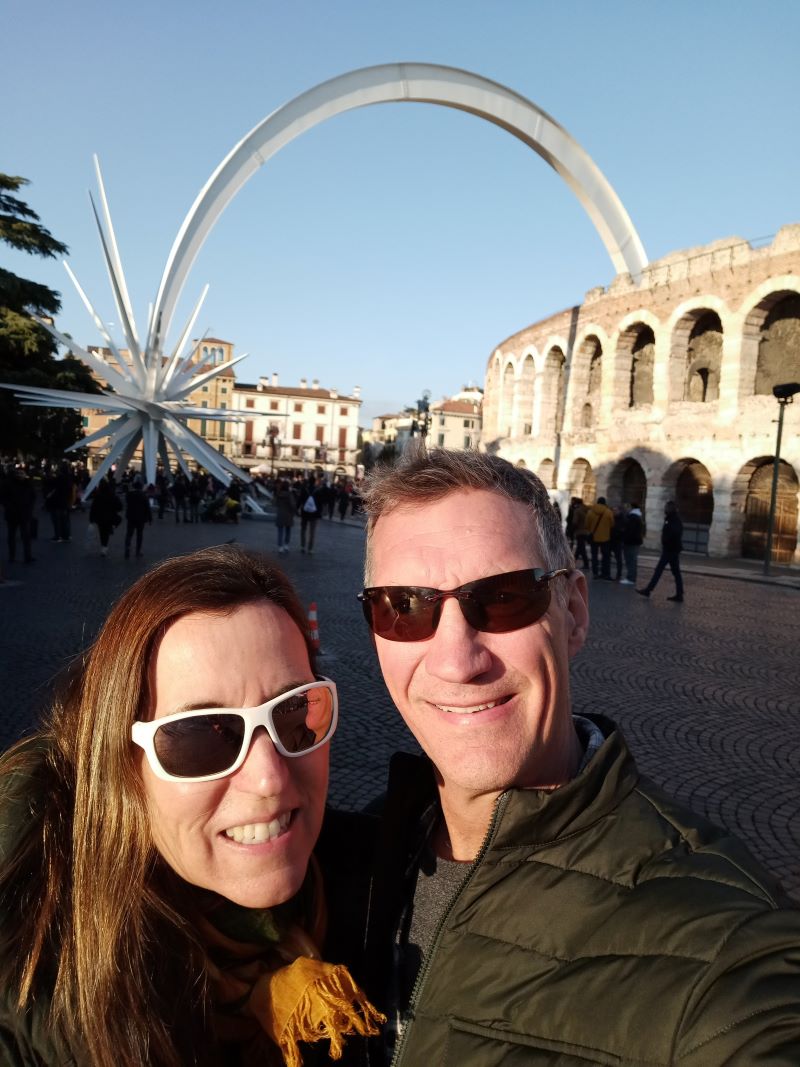
Really enjoyed this blog. Makes me want to visit Verona and read Romeo and Juliet again!
You should – visit, you can read on the way.